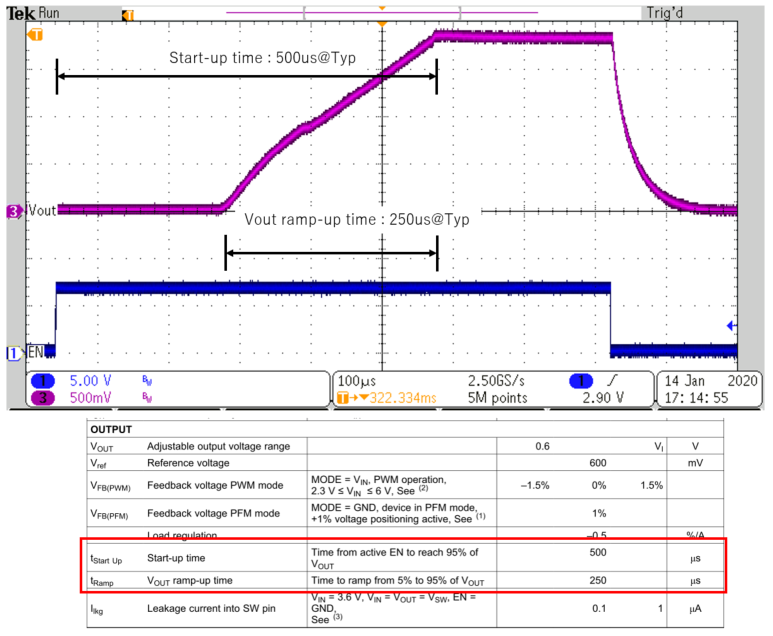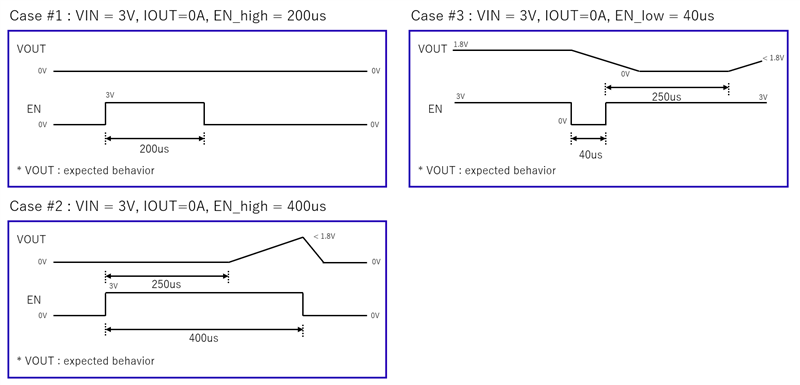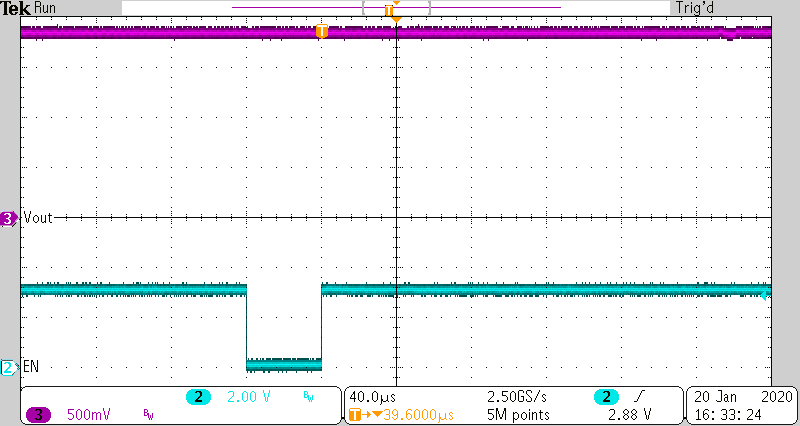Hi,
The response time for the EN pin depends on the load conditions, but could you please tell me the response time(the time to transition into shutdown mode and the time to return from shutdown mode) when the EN pin is asserted and de-asserted?
Best regards,
Kato








